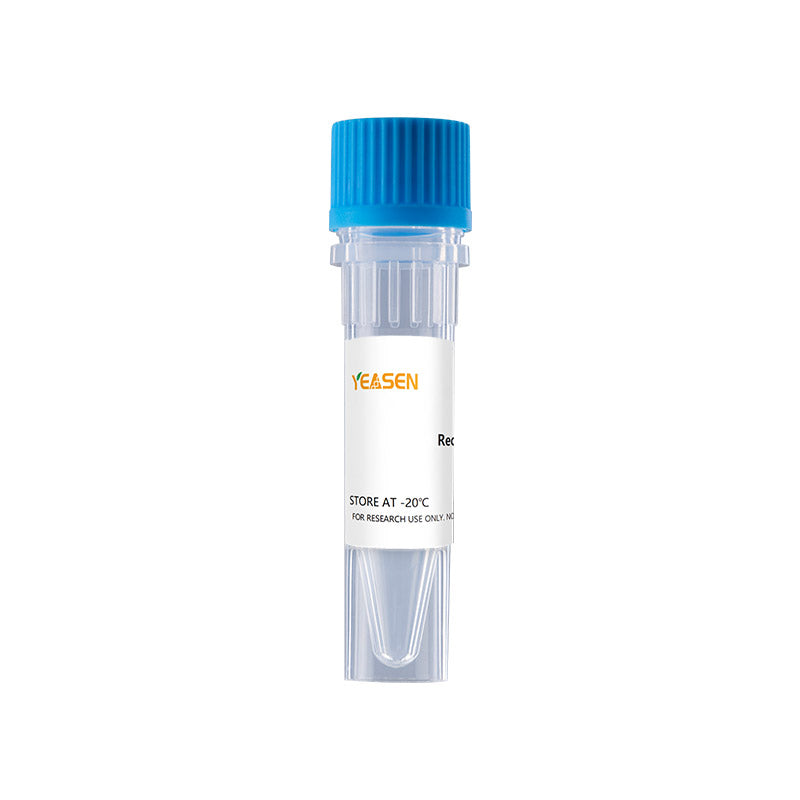Description
Mouse KGF-1 also known as Fibroblast growth factor 7 (FGF-7), is encoded by the FGF7 gene. KGF-1 only binds to the b splice form of the tyrosine kinase receptor, FGFR2b/KGFR. Affinity between KGF-1 and its receptor can be increased by heparin or heparan sulfate proteoglycan. FGF-10, also called keratinocyte growth factor 2 (KGF-2), shares 51 % amino acid sequence identity and similar function to KGF-1, but uses an additional receptor, FGFR2c. KGF-1 plays an important role in the regulation of embryonic development, cell proliferation and cell differentiation. KGF-1 actives on keratinocytes, and exhibits mitogenic activity for epidermal cells, but essentially no activity for fibroblasts. KGF-1 has species crossactive, mouse KGF-1 shares 96 % amino acid sequence identity with human and rat.
Product Properties
|
Synonyms |
Fibroblast growth factor 7;HBGF-7 |
|
Accession |
|
|
GeneID |
|
|
Source |
E.coli-derived mouse KGF-1/FGF-7, Cys32-Thr194 |
|
Molecular Weight |
Approximately 18.7 kDa. |
|
AA Sequence |
CNDMSPEQTA TSVNCSSPER HTRSYDYMEG GDIRVRRLFC RTQWYLRIDK RGKVKGTQEM KNSYNIMEIR TVAVGIVAIK GVESEYYLAM NKEGKLYAKK ECNEDCNFKE LILENHYNTY ASAKWTHSGG EMFVALNQKG IPVKGKKTKK EQKTAHFLPM AIT |
|
Tag |
None |
|
Physical Appearance |
Sterile Filtered White lyophilized (freeze-dried) powder. |
|
Purity |
> 96 % by SDS-PAGE and HPLC analyses. |
|
Biological Activity |
Fully biologically active when compared to standard. The ED50 as determined by thymidine uptake assay using FGF-receptors transfected BaF3 cells is less than 10 ng/ml, corresponding to a specific activity of > 1.0 × 105 IU/mg. |
|
Endotoxin |
< 1.0 EU per 1μg of the protein by the LAL method. |
|
Formulation |
Lyophilized from a 0.2 µm filtered solution in 20 mM PB, pH 8.0, 1 M NaCl. |
|
Reconstitution |
We recommend that this vial be briefly centrifuged prior to opening to bring the contents to the bottom. Reconstitute in sterile distilled water or aqueous buffer containing 0.1 % BSA to a concentration of 0.1-1.0 mg/ml. Stock solutions should be apportioned into working aliquots and stored at ≤ -20 °C. Further dilutions should be made in appropriate buffered solutions. |
Shipping and Storage
The products are shipped with ice pack and can be stored at -20℃ to -80℃ for 1 year.
Recommend to aliquot the protein into smaller quantities when first used and avoid repeated freeze-thaw cycles.
Cautions
1. Avoid repeated freeze-thaw cycles.
2. For your safety and health, please wear lab coats and disposable gloves for operation.
3. For research use only!
Payment & Security
Your payment information is processed securely. We do not store credit card details nor have access to your credit card information.
Inquiry
You may also like
FAQ
The product is for research purposes only and is not intended for therapeutic or diagnostic use in humans or animals. Products and content are protected by patents, trademarks, and copyrights owned by Yeasen Biotechnology. Trademark symbols indicate the country of origin, not necessarily registration in all regions.
Certain applications may require additional third-party intellectual property rights.
Yeasen is dedicated to ethical science, believing our research should address critical questions while ensuring safety and ethical standards.

